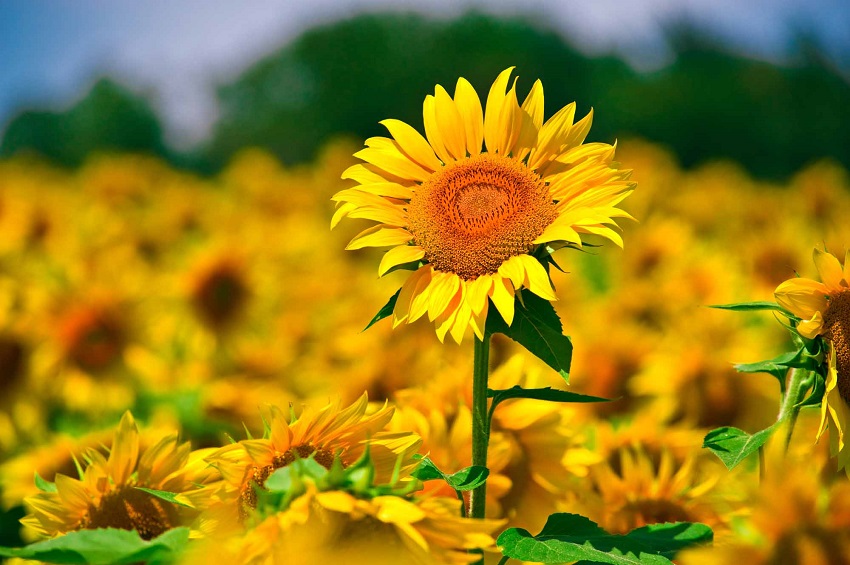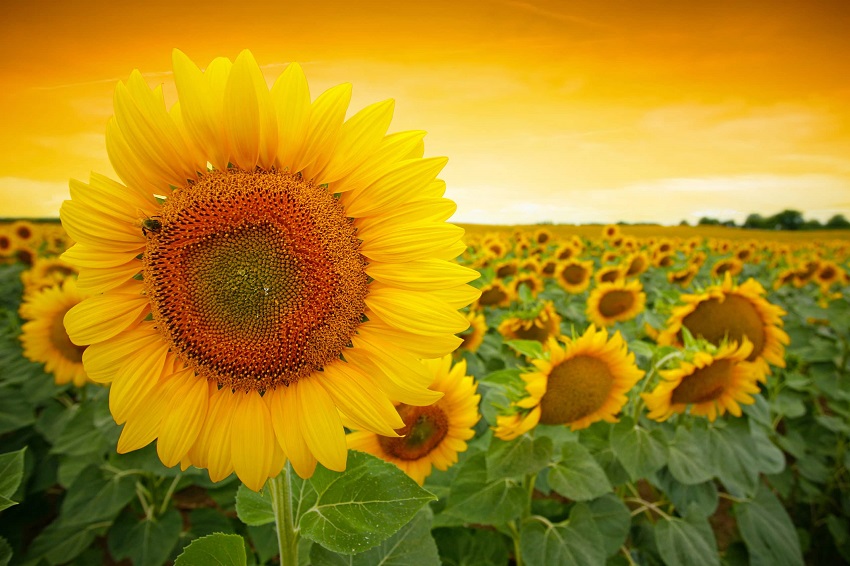Sunflowers, with their vibrant yellow petals and towering presence, are among the most beloved flowers in the world. They are often associated with joy, happiness, and the warmth of the sun. But have you ever wondered how long these beautiful flowers actually live? In this article, we will delve into the lifespan of sunflowers, exploring the factors that affect their longevity, and providing you with a comprehensive understanding of their life cycle. So, let’s dive in and discover the secrets behind the lifespan of sunflowers!
The Life Cycle of a Sunflower
Germination: A Promising Beginning
The journey of a sunflower begins with a tiny seed. When planted in fertile soil, adequately watered, and exposed to sufficient sunlight, these seeds sprout and start the process of germination. During this stage, the seed absorbs water, swells up, and eventually cracks open, allowing the embryonic shoot to emerge. From this point forward, the sunflower embarks on a fascinating growth journey.
Seedling Stage: Establishing Roots
As the sunflower seedling emerges from the soil, it develops its first set of leaves, which are crucial for photosynthesis. At this stage, the young sunflower directs its energy towards establishing a strong root system that will support its growth. The root system absorbs essential nutrients from the soil, ensuring the sunflower’s overall health and vigor. If you want to learn how to cut sunflowers for various purposes, such as bouquets or harvesting seeds, it’s important to wait until the sunflower has reached maturity and is ready for harvest.
Vegetative Growth: Reaching for the Sky
During the vegetative growth stage, the sunflower rapidly develops its stem, leaves, and branches. It aims to maximize its exposure to sunlight, utilizing its large, green leaves to capture the sun’s energy and convert it into vital nutrients through photosynthesis. As the sunflower matures, its stem becomes stronger and taller, allowing it to reach for the sky.
Blooming: A Spectacle of Beauty
One of the most enchanting moments in a sunflower’s life cycle is when it blooms. The tightly packed bud unfurls, revealing a magnificent disk of vibrant petals that surround the central disk, which contains hundreds or even thousands of tiny individual flowers. Blooming typically occurs during the summer months, and the sight of a field of sunflowers in full bloom is truly awe-inspiring.
Pollination and Fruiting: Seeds of New Life
As the sunflower blossoms, it attracts various pollinators, including bees, butterflies, and birds, which play a crucial role in the reproduction process. The insects and birds transfer pollen from one sunflower to another, enabling fertilization to occur. Once fertilized, the sunflower’s petals wither away, and the disk transforms into a dense cluster of seeds, arranged in the iconic spiral pattern. These seeds are the future generation of sunflowers, carrying the potential for new life.
Senescence: The Circle of Life
Like all living organisms, sunflowers eventually reach the end of their life cycle. Senescence, the final stage of a sunflower’s life, marks the gradual deterioration of the plant. The vibrant yellow petals fade, the leaves wilt, and the stem weakens. The once towering sunflower becomes a shadow of its former self. However, even in its decline, the sunflower can still serve a purpose, providing a habitat and nourishment for insects and birds.
Factors Affecting Sunflower Longevity
The lifespan of sunflowers can vary depending on several factors, including environmental conditions, species or cultivar, and care provided. Here are some key factors that influence the longevity of sunflowers:
Environmental Conditions
Sunflowers thrive in sunny locations with well-drained soil. They require a minimum of six to eight hours of direct sunlight daily to reach their full potential. Adequate rainfall or regular watering is essential to keep the soil moist but not waterlogged. Extreme heat, prolonged drought, or heavy rains can stress the sunflower and shorten its lifespan.
Species and Cultivar
There are numerous sunflower species and cultivars, each with its unique characteristics and lifespan. Some species, such as the common sunflower (Helianthus annuus), typically live for a few months, while others, like perennial sunflowers (Helianthus species), can live for several years. When selecting sunflowers for your garden, consider their specific lifespan to align with your gardening goals.
Care and Maintenance
Providing proper care and maintenance can significantly impact the longevity of sunflowers. Regular watering, fertilization, and weed control contribute to the overall health and vigor of the plants. Removing faded flowers, known as deadheading, can also extend the blooming period and promote the growth of new buds. Additionally, supporting tall sunflower varieties with stakes or trellises can prevent stem breakage during windy conditions.
Conclusion
Sunflowers have a fascinating life cycle that encompasses germination, seedling stage, vegetative growth, blooming, pollination, fruiting, and senescence. The duration of a sunflower’s life can vary depending on environmental conditions, species, and the care it receives. By providing optimal growing conditions and nurturing these magnificent flowers, you can enjoy their beauty and presence for an extended period. So, whether you plant sunflowers for their cheerful appearance, their ecological benefits, or their edible seeds, take delight in the journey of these remarkable plants and cherish the moments they brighten your days.

